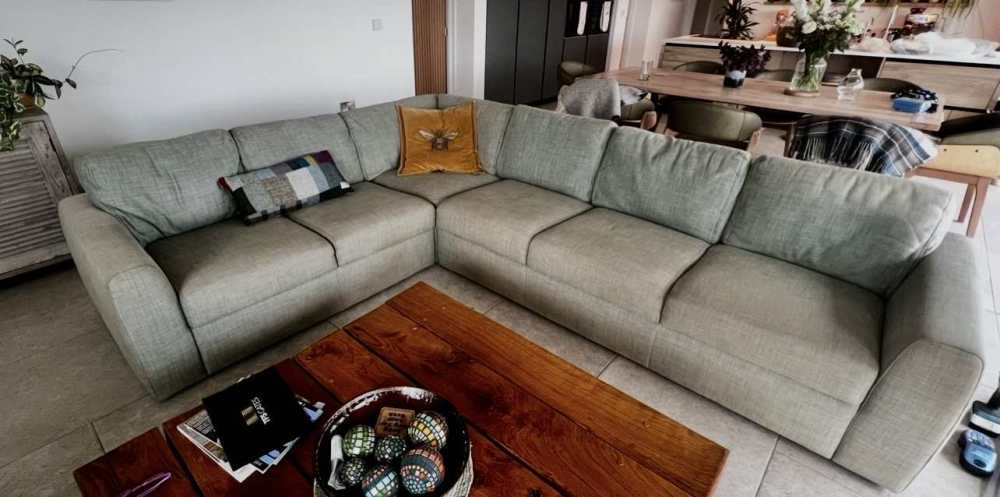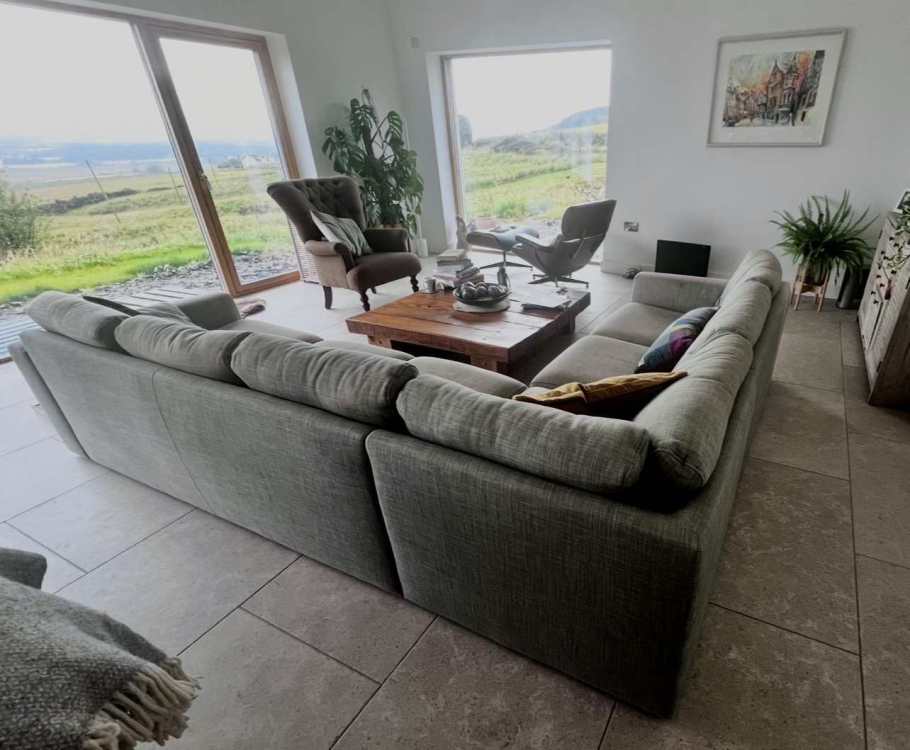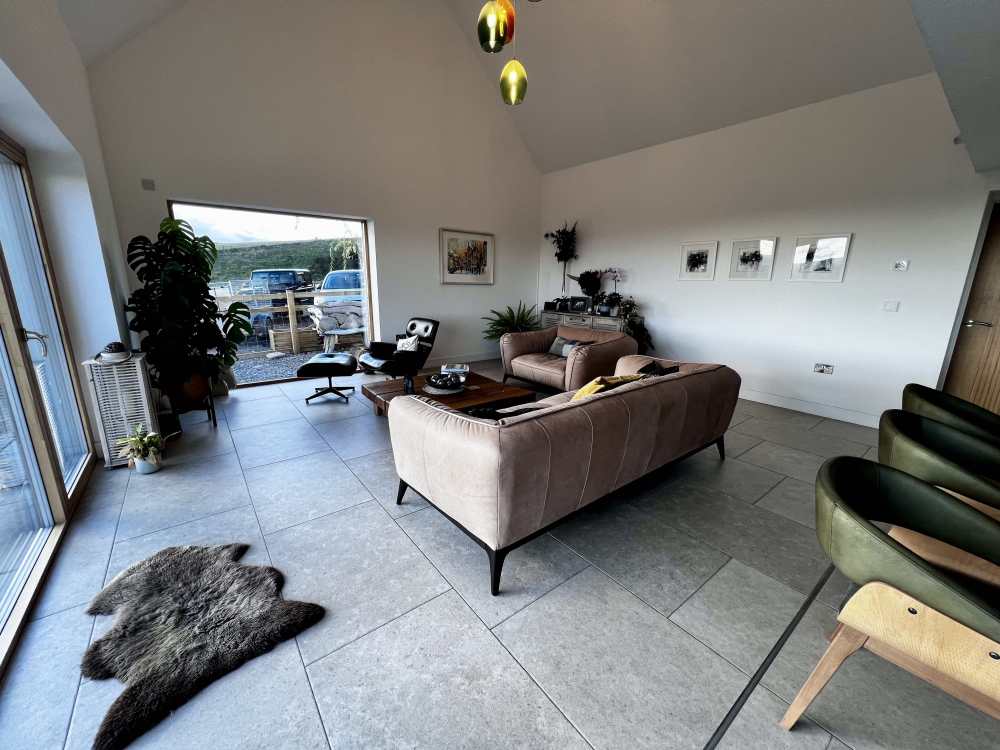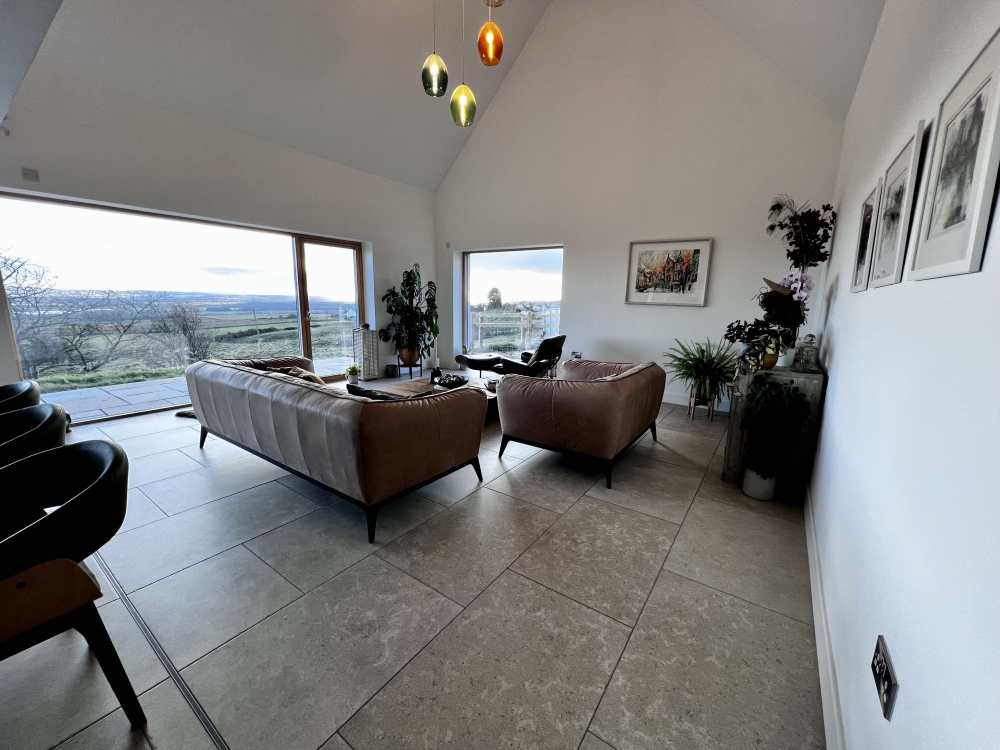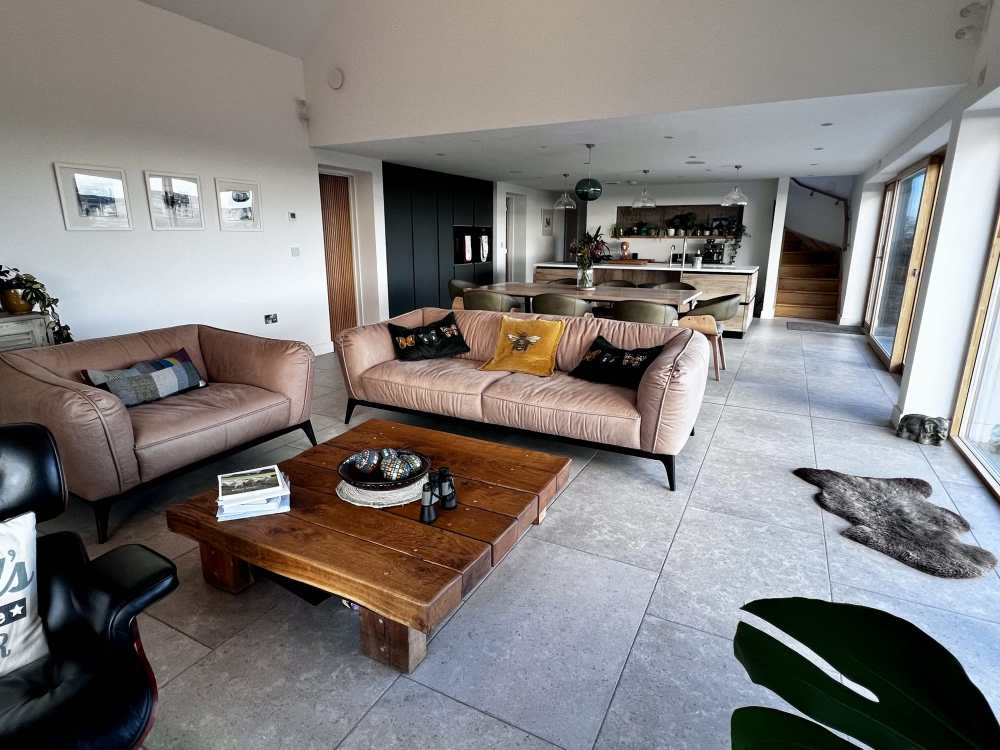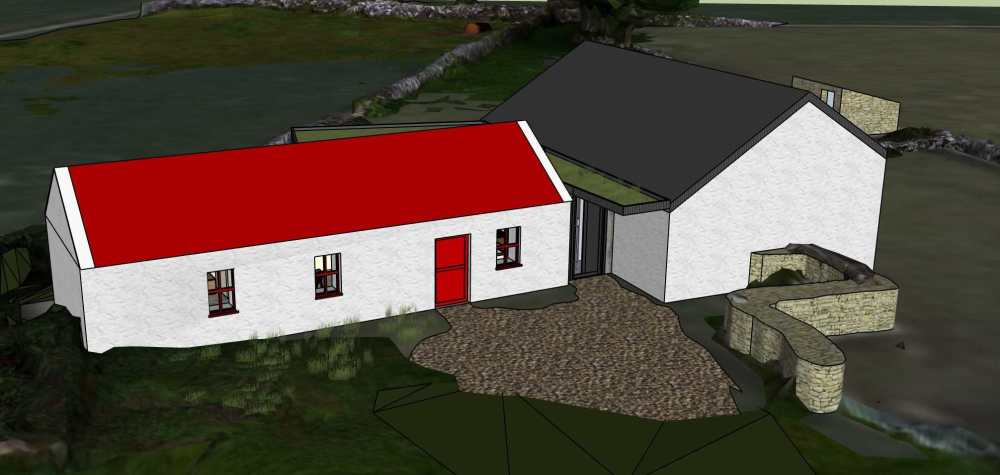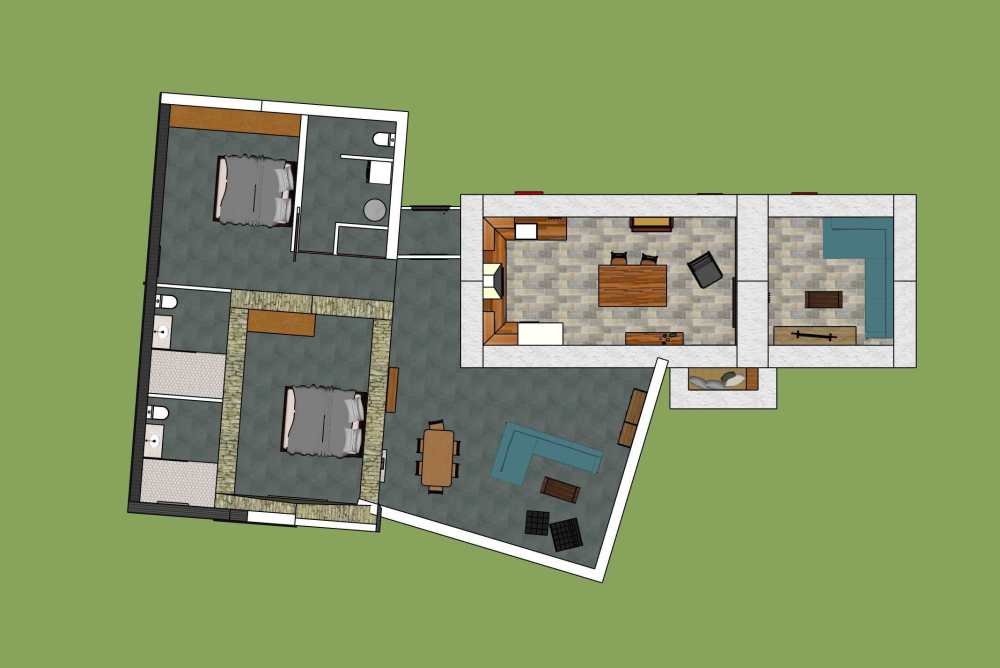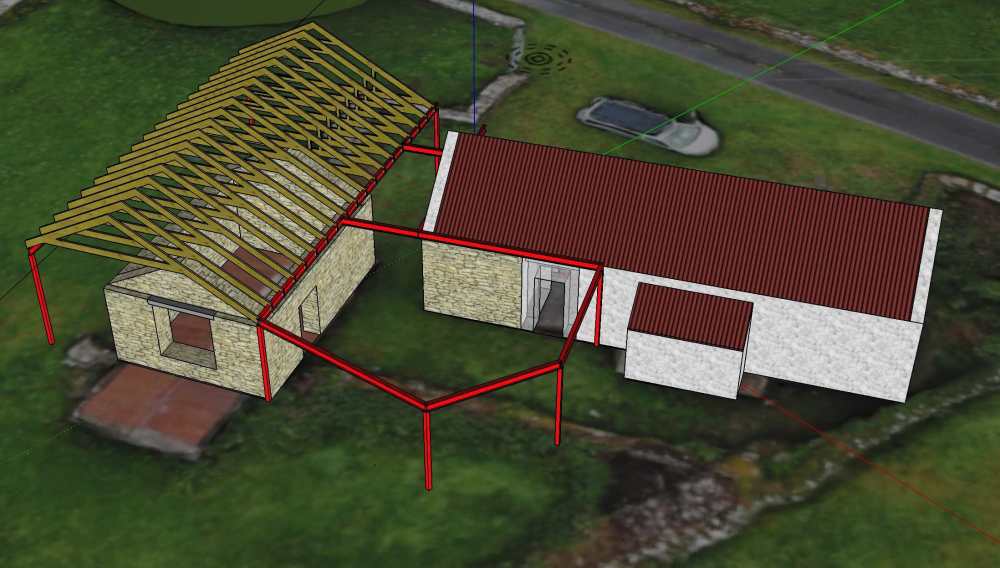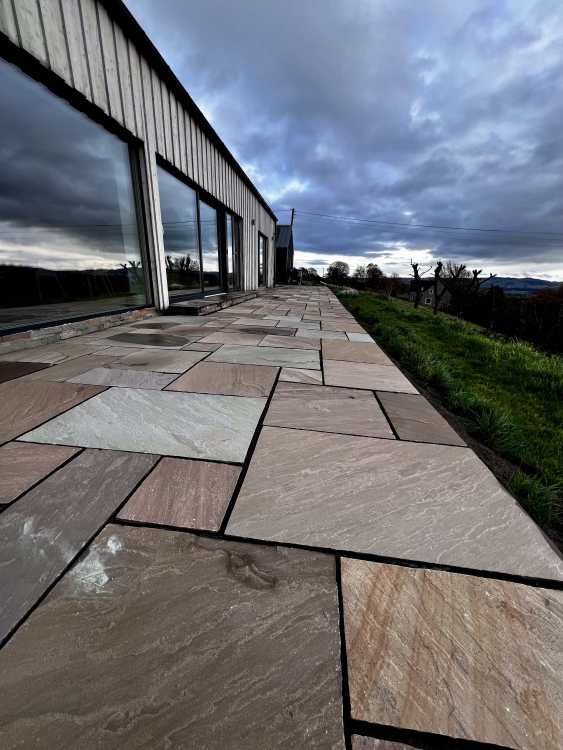Leaderboard
Popular Content
Showing content with the highest reputation since 10/07/25 in Posts
-
7 points
-
6 points
-
6 points
-
We got our final building regs sign off approval today so that’s us technically finished. Yay. Feeling quite relieved. It’s taken just over 4 years from when we first set foot on the land till now. What a ride. 😂 Thanks all. Buildhub has been awesome.6 points
-
Self-cleaning is a bit of an overstatement by Lindab although the debris does end up in a neat pile in front of it. My only criticism of it is you need three bits. The downpipe, a shoe and the self cleaning trap. Four bits in my case as I also used one of those rubber boots. The plus side was I was able to use a single run of downpipe as the shoe and trap added length.5 points
-
Aero barrier have been and gone. initial air changes per hours was 1.7 builders did an excellent job and AB guys were impressed. after their magic mist was finished, they got it down to 0.2.5 points
-
Hi All, Based in the South East, in a seaside town called Whitstable, which falls under Canterbury City Council. Back in 2022, I purchased a commercial barn with the dream of converting it into a home. When I first bought it, I (naively!) thought the planning process would be fairly straightforward under permitted development rights. Unfortunately, that wasn’t the case, the barn was considered to be curtilage listed, which meant a much longer and more complicated route through planning. After a couple of years of back-and-forth emails, refusals, research, and learning far more about the planning system than I ever thought I would, I’m happy to say we finally got permission granted this May for the change of use from a commercial workshop to a residential dwelling. This will be a self-build project, and I’m just starting to look into materials and suppliers with the hope of kicking things off before the end of the year. That said, there are still a few more surveys and bits of planning bureaucracy to sort through first. No doubt I’ll be here soon asking for advice (and probably pulling my hair out along the way), but I’m really looking forward to learning from everyone and sharing progress as things move forward. Thanks for having me, Leon5 points
-
5 points
-
I'm sorry but this comment feels off. You (and we) are getting huge amounts of input from this forum. It's by asking questions and getting others inputs that we learn......the answer may not always be what we were expecting but that doesn't mean it's wrong. So rightly or wrongly I am offended for @Nickfromwales And as to the question at hand good luck with your project. From our perspective there is no way that we'd let anyone near site (knowingly) that didn't know what bits to bring. Maybe because I haven't had my second coffee yet, but right now, not feeling like I'll bother to share any experience (as hands on self builders, mid project) with you right now.4 points
-
Thank you all for your advice, I spoke to the architect today and he has agreed that block and beam isn’t required. To be fair to him, he hadn’t finalised all the drawings as there have been some too’ing and throwing between him and SE and he did state it required a re-design. If I hadn’t of come on here and sort advice I’d of probably let it go. Maybe the architect may have changed it regardless but at least I was forearmed. thank you all again. i am sure i will have many more questions to come considering i am very early in to the project 🙂4 points
-
4 points
-
I have always done the same on all property renovations. A tupperware box, usually with a small Teddybear, Some photos, with names of the family, and a note telling the finder a bit about us. I also put our first Dogs collar and tag, around the trunk of a Silver Birch tree that we planted, to remember him. When we sold, the leather had been enveloped into the growth of the trunk, with just the name tag sticking out. The people who we sold the house to, who remained friends, told us that the name tag recently got enveloped by the trunk. They have not done any major alterations. So the tupperware box is still inside One of the stud walls. We also built in secret, letterbox sized connections, between the Two of the bedrooms. There children had both these rooms, and we were told they were delighted when the found the secret connection between the rooms. It took them over Two years before they discovered them. We told them about the box in the wall, but have refused to tell them where it is.4 points
-
That’s a great thing to keep, ties the old use for the building to the new house. A whisky miniature, packet of shortbread, some pictures of the land as it was, and of us standing on it the day we completed buying it, a print out of the BBC News front page, a wee drawing my other half did with a note, and my favourite joke.4 points
-
I grew up in England, but now live in the Netherlands, where my partner and I have a fixer-upper from the 1960s. One big task we recently completed was installing MVHR (previously it only had natural ventilation, which let in sounds in summer and cold in winter). This forum was a great resource during planning and installation, so I would like to thank everyone who has written here on that subject! Although I speak Dutch, and there are some great forums here which cover these same topics, it's much easier for me to quickly read posts in English. And MVHR is one thing that's not so different between countries, as the system we bought is one that's available in the UK too. I joined originally so I could answer a question in a thread which I would have found greatly useful (about compatibility between different brands semi-flex ducting and fittings), but there have also been times when I needed a sanity-check or could add my 2p's worth to a thread. So here I am!4 points
-
You need to be SURE of the block and beam make up. If it is NOT well insulated then 20mm of insulation with the UFH will NOT be any good. We can't form much of an opinion from the picture as the "blocks" are missing and all that is there is the beams over a presumably cold ventilated void. You need to solve that one before spending any more effort on this, it might not be viable without a LOT of work. You don't fit UFH for "warm feet" the floor temperature will only be a few degrees above room temperature, so barely enough to make a floor feel "warm" You fit it for even temperatures without the hot spots radiators inevitably give you, and not having radiators taking up walls space and limiting your furniture placement.4 points
-
There’s no particular reason for UFH pipes to fail under normal use. Every house I’ve lived in with rads have had leaks. Other than the obvious benefits an often overlooked benefit of UFH is the practicality of no rads on the walls so it makes room layout better. I’ve also simplified our heating system so there’s nothing overly complex about it. We’ve done the wall of South facing full height glass, big West facing picture window, and big full height picture window in a small bedroom. There’s no doubt it has some impact in the hot summer days and on cold dull days (especially the bedroom) and less glass would have been better from a performance point of view. But houses are a compromise between aesthetics, performance, and how they make you feel and I’d rather have the view and live with the minor downsides. That said the heating has only really started to come on in the last week. Had we built the house with a performance at any cost perspective we’d barely need heating at all. Interestingly, despite us running the house relatively cool, all our friends, who live in old cold stone buildings, find it too hot.3 points
-
Don't go near CEF or any of the other big boys, seek out a small indy wholesaler- or just go to Screwfix...3 points
-
Dear forum members, Our house is complete and we have been resident for three months. I thought to post some pictures and I offer to answer any questions people might have. I don't put ourselves on a pedestal as being any better than other projects, only to say that we have done it. Our primary decisions: We chose a RIBA architect given the importance of the initial concept The layout is somewhat novel, having an H footprint with a single storey 'extension' to reduce the mass of the main house for planning purposes and to help project the rear of the house beyond the shade of the ridge line We chose timber frame (we have built with timber frame, brick and block and ICF in the past) because of speed of construction, and thermal performance We selected MBC from a shortlist of three TF suppliers, and chose MBC's insulated slab We are very pleased to have chosen a large solar array (9KW) and Tesla battery. We have used no grid electricity since commissioning. We have a Valliant ASHP with UFH but haven't had need to heat the house yet We have MVHR which works very well with our air tightness of 0.89 We have no fireplace or chimney We project managed ourselves, and were onsite every day and I did a lot of carpentry / general work alongside the proper trades Project timing: groundwork prep Dec 24, slab Jan 25, frame erection February, windows March, resident 4th July, finished end of August.3 points
-
Are you building via your business or another company setup to solely to build house? Not sure how that works as the company is a different entity to yourself in the tax world. The company would build for you, the client. But company needs to a building company not consultants as way of an example. Suspect it will be way more complex than it needs to be and possibly cost you more.3 points
-
After a dry summer and minimal progress, we are getting a roof on at last... in foul weather. Fortunately the cladder doesn't mess about and has hired in this very serious kit. Hence 350m2 on plan was clad in 2 days. Huge crane with panel clamp, big mewp and don't forget the forklift off to the right.3 points
-
It will feel overwhelming and you’ll have to pace yourself because everything takes so long. Money flows out at a rate - but at least you won’t have rent to pay with the static. We’ve friends who are self building from a caravan. They put a yurt up May-October every year (4years and counting!) and that doubles their living space for half the year. Might be an idea? On a tight budget you’ll need to do tons yourself - almost every job is doable but work out where you need skills and look for those people early (that was groundworks, plasterers and tilers for us). The pad by the bed is an excellent tip - so many nights waking 3am when there’s something forgotten or needs answering. It is a scary ride but also amazingly fulfilling. But you do have to pace yourself - I’d say it’s really difficult because you’ll want to move it forward all the time but try and schedule normal stuff in every so often. I’m having my first day off work/off site for many weeks today (catching up on build hub 😆) and the mental break being away from site feels amazing. And it’s only 9am! Keep a diary and you might even want to blog here. Realising how far we’ve come is more important to me than what’s still left to be done. I often flick back to pictures from a year before (founds in, timber frame was going up) when I’m feeling fed up - just to remind myself we’re getting there (on painting, 2nd fix and floor laying now). Good luck!3 points
-
3 points
-
Environment Solar energy is going to power the world much sooner than you think Solar electricity is growing rapidly, but can it really dominate the global energy system? Here is what it will take for us to power the planet on sunshine By Madeleine Cuff 23 October 2025 The future of solar is looking bright fuyu liu/Shutterstock Is solar power going to take over the world? The past few years have seen a frankly astounding acceleration in the rate of its deployment, with total generation capacity doubling between 2022 and 2024 to supply a full 7 per cent of the world’s electricity. Just how high can that figure go? The first six months of 2025 saw wind and solar together pass a historic milestone, generating more power than coal for the first time and making renewables the world’s leading source of electricity. The driving force behind this “crucial turning point” in the energy transition, as the UK-based think tank Ember described it, was the growth of solar. It accounted for 83 per cent of the total increase in the world’s electricity demand in 2025, Ember’s analysis indicates, and has been the largest source of new electricity globally for three years in a row. Solar’s secret weapon? How cheap it is. It is the world’s lowest-cost electricity, with the cost of installing a solar system dropping in price by 90 per cent over the past 15 years. “Right now, silicon panels themselves are the same cost as plywood,” says Sam Stranks at the University of Cambridge. In other words, we have a plentiful and cheap source of electricity that can be built quickly, almost anywhere in the world. Is it fanciful to imagine that solar could one day power everything? At the most fundamental level, the supply of solar energy to Earth is almost limitless. Even once you factor in the efficiency rates of modern solar panels, supplying all of the world’s energy needs with the sun’s power would require around 450,000 square kilometres of land, a 2021 report from the UK think tank Carbon Tracker estimated. That’s just 0.3 per cent of global land area. Kingsmill Bond, one of the report authors and now at Ember, says that, while there are “trade-offs” when it comes to land use – solar may compete with agriculture, for example – “for most countries, there is plenty of space to deploy these technologies”. A new generation of panels The question, then, is what is stopping solar power from taking over the global electricity supply entirely? The first issue is that of efficiency. Silicon photovoltaic panels, which make up the bulk of the global solar market, currently convert about 20 per cent of the sun’s energy into electricity. By comparison, hydropower plants convert 90 per cent of the potential energy into electricity, wind turbines about 50 per cent and fossil fuel plants 30 to 40 per cent. In real terms, this means you need many more solar panels to provide the same amount of power that you could harvest from other sources. That’s why solar firms and scientists are hard at work trying to unlock more efficiency gains from solar panels, in the hope that an efficiency boost will deliver a double win for solar: even lower system costs and less demand for land. However, crystalline silicon panels are nearing the limits of the efficiencies they can achieve, with best-in-class cells now at about 25 per cent efficiency. “The practical limit for crystalline silicon is probably about 28 per cent,” says Jenny Nelson at Imperial College London. Pushing efficiencies above that will require a shift to what is known as a tandem solar cell, which introduces a second semiconductor to increase the amount of energy a cell can extract from the solar spectrum. Tandem silicon-perovskite cells are seen as the most promising option, with a theoretical efficiency limit of about 50 per cent. Real-world tandem panels won’t achieve anything like that level of efficiency, but could reach 35 to 37 per cent efficiency, says Stranks. After years of research, the first tandem silicon-perovskite solar panels are just starting to enter commercial production, and they need to be tested by industry to see how long they maintain their performance under real-world conditions. But Stranks is optimistic about their potential. He estimates that in 10 years’ time, they will become the dominant technology on the market. “On the face of it, they wouldn’t actually look that different from the roof or on the street, but they are producing 50 per cent more power than today’s panels,” says Stranks. “It’s a big change.” Not only would greater efficiency cut costs even further, but it could also unlock new deployment opportunities, says Stranks. For example, high-efficiency panels could enable solar roofs on electric cars, allowing their batteries to charge during the day. The stored power could then either be used for transport or discharged to the home for use during the evening, he suggests. Solving storage Such innovation could help to untangle one of the other major issues with solar power – its fickleness. The sun, of course, doesn’t shine all the time. For countries in the “sun belt”, including India, Mexico and many African nations, this is less of a problem, as the sun shines almost all year round and batteries can be used to store excess energy during the day for use in the hours after dark. This solar-plus-storage set-up is becoming increasingly cost-effective, with the cost of lithium-ion batteries dropping 40 per cent in the past two years alone, according to BloombergNEF. “Ultimately, the only advantage that fossil fuels have over sunshine as a source for electricity is their storability,” says Bond. “And, suddenly, that storability issue has been solved for 90 per cent of the time by a single technology, which is the battery.” But for countries further north, where winter days are short and grey, it is a different story. “[Solar] is an unbelievably, amazingly good energy source, with zero pollution, rapid payback of energy investment – it just ticks every single box,” says Andrew Blakers at the Australian National University in Canberra, Australia. “Unless you live in northern Europe, north-east Asia or the north-east United States, where you have plenty of sun in summer and not much in winter, [solar] is simply the best.” For countries that suffer long, dark winters, wind power can step in to fill much of the gap, says Blakers. But energy storage solutions that can bank power for weeks or months at a time will also be needed. Such “interseasonal storage” is still in its infancy, with few solutions operating at commercial scale. But pumped hydro, hydrogen and compressed air storage could all provide an answer to this conundrum. Blakers’s prediction? “Batteries take care of the short term, pumped hydro takes care of the long term.” Political headaches If anything, efficiency and storage are the easy problems to solve. “I think the bottlenecks probably lie in politics, consistency in policy, regulation, vested interests of other industries,” says Nelson. The climate-sceptic Trump administration in the US is a case in point. Earlier this month, federal officials cancelled a huge proposed solar project in Nevada that would have been one of the largest schemes in the world, just the latest in a series of actions to curtail solar funding programmes and block projects. But Bond believes the transition to renewable power is now all but unstoppable given its economic advantages over traditional generation sources. “Incumbents can hold back the tide for solar in individual countries and individual projects and individual years,” he says. “The current Trump administration is doing its very best to slow down the current deployment of renewables. But all it really means is that they then fall behind in the global race to deploy superior technology.” Blakers agrees, adding that solar energy may be the only way to meet fast-growing power demand from AI data centres. “Even in the US, it’s difficult to see solar being turned off even by a determined federal government, because many states like it, and it’s by far the quickest way to get large amounts of energy,” he says. The other major bottleneck for clean energy is logistical. Existing electricity networks need to be rewired to cope with huge, fluctuating supplies of electricity coming from new areas. A more flexible grid, which can cope with surges in generation and even tweak power demand in response, will help to maximise the use of green power. But delivering these grids of the future costs money. In the UK alone, energy companies plan to spend £77 billion over the next five years refitting the transmission network to cope with the shift to wind and solar. In lower-income nations, where grid networks aren’t yet so comprehensive, countries can move more quickly to build renewable-friendly infrastructure from the get-go, allowing renewables to penetrate further into grid supply. The 10 so-called BRICS nations – Brazil, China, Egypt, Ethiopia, India, Indonesia, Iran, Russia, South Africa and the United Arab Emirates – now collectively account for more than half of the world’s electricity generation from solar, according to Ember. A wider challenge for countries is to electrify greater chunks of their energy demand, from heating to transport. Such progress is crucial to cut fossil fuel use in other parts of the global economy. As Nelson puts it: “If we want to decarbonise the planet, then we need to electrify first.” Here too, lower-income nations are racing ahead of higher-income ones. China’s share of electricity in final energy consumption hit 32 per cent in 2023, far outstripping the 24 per cent electrification rate of the US and richer European nations, says Ember. A solar future? Despite the success this year, the technical, logistical and political challenges outlined above may slow the rollout of solar in some countries in the short term. Earlier this month, the International Energy Agency predicted that renewable power will more than double by the end of the decade, but is set to fall short of an international goal to triple capacity by the same date. The agency said policy changes in the US and the challenges of integrating solar into grid systems were headwinds to the expansion in renewables capacity. But energy market experts are confident that, by mid-century and beyond, solar will dominate global energy supply. “By the end of this century, it is pretty clear that we will be getting all of our electricity from renewable sources, of which the vast majority will be solar,” says Bond, estimating that as much as 80 per cent of the world’s electricity supply will be generated by solar by 2100. Added to that, at least 80 per cent of the world’s total energy demand will be electrified, he expects. Roadblocks from politics, energy storage and infrastructure will all be cleared out of the way to usher in the green power revolution. “The human condition is to turn energy into stuff,” says Bond. “We use energy for everything. And now, suddenly, we found this cheap, universal energy source – of course, we are going to figure it out.”3 points
-
3 points
-
3 points
-
Mechanically removing the worst of it is the 1st step, eg a Stanley blade / scraper, and a plastic removal tool (Amazon jobby) will get you so far. Then you’ll need to try Multisolve from CT1 which you spray on and leave for a while, then rub more into the sealant to remove it; it emulsifies silicone etc and cleans the remnants off pretty well ahead of new works. Use a traditional cotton dish cloth for the cleaning phase. Good luck, it’s a pig of a job.3 points
-
With the proposed falls are you simply inviting trouble. Any blockages from autumn leaves etc could lead to water accumulation at the house interface. Possibly water in the house. You would never slope a patio towards the house, so why would you do that with a roof? I would be sloping away from the house, simple and safe.3 points
-
3 points
-
Greetings from South Oxfordshire. We are waiting to exchange on a very tired (actually unliveable), 1960s bungalow. It needs gutting and extending at the very least. We are also considering demolition and building to the Passive House "Classic" standard, especially if we can get planning permission for a 1½ storey home. It's likely to be all-electric, so "Plus" might be achievable. We're not too bothered about certification, except as a means to achieve those ends. I have renovated a couple of Victorian properties and read a lot over the years, including quite a bit on this site, but have never attempted anything of this magnitude. Apologies in advance for stupid questions!3 points
-
Hello! My partner and I are just starting out on our project after buying a derelict cottage in Ireland. I hope it's ok to post questions about it here, I know the laws/codes can be quite different in Ireland, but there's not many resources like this forum. We're total novices at building, but want to do as much as we can ourselves and to learn while doing it. We've had a little input from architects and a builder who will hopefully be working with us. Obviously we'll be getting an engineer involved eventually. Our starting point is a mostly untouched vernacular 3 room Irish Cottage. With countless layers of lime plaster on the walls and no plumbing of any kind. Sometime in the 70s the outside was concrete rendered, a limited electrical install was added, and the remains of the old thatched roof was covered over with asbestos cement boards. Close to the house is a small traditional stone shed. The whole area is criss crossed with beautiful dry stone walls. Our current plan is to restore the cottage in an authentic traditional way, with breathable lime plaster. But have a new well insulated roof, door, and windows. Then link it to the barn with a flat roof extension. The stone barn will be fully enveloped in a new building which extends out the other side to create a spare bedroom and ensuite bathrooms. Here's a few photos. I'm sure I'll have lots of specific questions as we go!3 points
-
+1 to most of that: We had power floated the garden room and it worked well we have an acceptable surface in there BUT the main house was not because: 1. It was very hot over 30OC 2. Much bigger roughly 3 times the area of the garden room. 3. Not enough people, we had 5 working all the time, but only two of us had the experience on the garden room. 4. We didn't have a long enough floating bar - our hire people let us down on that, the long bar was not available, so we needed more passes which took more time than we had given the drying rate. In the end about 70% of it was more than acceptable but 100% is the only answer unless you want level changes in your floor areas. It was a disappointing day but we knew the risks and accounted for failure in the plans - eg levels. As an idea of the cost of failure the flooring cost for us is about £18K more than it would have been had we succeeded which might put the £32K somewhat into perspective for you. All in all my advice is not to try it yourself, look at the balance of costs and get a few more quotes.3 points
-
You will find that the planners will be ambivalent. They will consult highways who will say that this is a private track and as long as the vehicle movements from it do not impact their highway network they will have no comment to make. Environmental health may flag up the refuse situation but will basically say the occupants will have to store their bins within so many metres of the highway for collection otherwise it will not be picked up. Apart from that they are unlikely to be interested. They aren't the problem. It will be Part B of the Building Regulations which sets out access for firefighting that is. Fire appliances only carry so much hose so need to get close to the building in the first instance. They want to get hose access to all parts of the building within 45m of their appliance. It is Building Control therefore that you will need to convince that your fire mitigation proposals will still meet the requirement which is: 1) The building shall be designed and constructed so as to provide reasonable facilities to assist firefighters in the protection of life. 2) Reasonable provision shall be made within the site of the building to enable fire appliances to gain access to the building. The problem these days is that competition between local authorities and the private sector means finding someone to consult with prior to making an application is not easy. Why would a private BC contractor spend time with you going through proposals only for you to engage the local authority and visa versa. I fear you will not get a definitive answer with respect to building control until you are a way down this route (excuse the pun). Have a good look at requirement B5 and see how close you can get to the guidance as you may have to take a calculated risk on gaining BC approval. Finally, remember that post Grenfell and now with the new Building Safety Act there is not much appetite out there for regulators to take risks on interpretation of these sort of life critical matters on your behalf.....3 points
-
3 points
-
For me you are wasting a load of money and effort doing UFH. Block and beam and thin insulation you will be chucking money down the toilet year on year in increased running costs. I read an article the day about radiators and cold feet. The reason people get cold feet - the heating runs an on off strategy with high temperature radiators. Radiators don't really radiate heat they heat air via convection. The convection current is quite strong with high temperatures. The hot air goes the ceiling and cold drops to your feet. Thermostat stops the radiator the room cools, you still have cold feet the cycling repeats. Solution is low temperature heating, so with radiators you can run weather compensation or load compensation. So the heating is lower temperature and more continuous. Your easiest option is to get your boiler to run opentherm and move to priority domestic water, so you can get two flow temps one for DHW heating and a variable temp for heating. You need to share your boiler details also.3 points
-
Bought my first house about 2 years ago and have been converting the detached garage into a workshop. I have done a room within a room design for soundproofing, which seems to work well. Most of any of my posts will likely be about noise, noise control and soundproofing, I can only apologise 😂3 points
-
Running one 400mm wide layer of say 50mm along the wall plate will give a nice controllable ‘straight edge’, then butt the next 100mm against that and roll that out, and there’s you pitched layers of insulation managed in the eave where it’s a git to get in to and detail. Then overlay as you wish to get to the minimum 300mm stated. After 300mm it’s assumed that the weight of any further layers will start to compress the bottom (first) layer and then that layer becomes far less effective. Wool needs to remain as decompressed as possible to function best, so those stilts from the sheds to raise the attic flooring up and over will defo be needed if you intend to store anything up there (which requires a deck and walk/crawl areas).2 points
-
Hard landscaping almost finished, needs pointing. Bit of fencing to do between the house and garage which I’ll use the leftover larch cladding to match the house. Many tonnes of gravel to put down on the driveway, a few tonnes of topsoil then a load of planting to do along the line of the patio to soften it all. Planted my first two trees. Silver birch and a Willow.2 points
-
We got a kitchen on supply only. The after sales service has been diabolical. More than not recommending, we will be actively discouraging anyone who asks to avoid them like the plague.2 points
-
If you have pp for 2 houses, 2 acres, and a tight budget, why not sell part of the plot with pp for 1 house to help fund your build?2 points
-
At a first glance you will want to consider doing something with the huge void between the ceiling and the underside of the warm roof, where all your expensive heat will exit via the eaves.2 points
-
Turn ALL GF thermostats down. That should shut off all downstairs loops. And will also test my question, does the upstairs manifold continue to work and does the ASHP continue to work.2 points
-
I know that, I've read enough of your posts to know you'd never go near one 😉 Exactly and that was who my question was for. Because this is where design starts: What is the problem and how am I going to solve it? Therefore logic states you need to ask why you want it (and that doesn't mean you, exactly) You don't just follow the level 3 heat pump training and follow up your heat loss and emitter sizing with a blind buffer sizing calc. You need to know what you're doing it for. Yet it's common in the industry to use the term interchangeably, so probably a good thing to clarify this in a terms of reference rather than make assumptions. I should've had my 2nd coffee first 🙄2 points
-
The drawing does not show the hedge. Can you overlay the topo you had done? It would be useful if it included the kerbs, telegraph poles, inspection chamber covers and any other fixed points, so there is something to reference. Measuring to the middle of a straggly hedge will probably not help much.2 points
-
Right, the important times are October, November, December, January, February and March, with the really problematic months being December and January. So October you will get a mean generation, the kWh (not Kwh), of 191 kWh, November 126 kWh, December (the worst month) 85 kWh, January 98 kWh, February 162 kWh and finally March 274 kWh. Starting with heating hot water, it takes 4.2 kJ (kilojoules) or 0.00117 kWh, to heat 1 litre of water by 1 K (kelvin, which uses the capital K). One kelvin (uses lowercase first letter when used in science, except at the start of a sentence) is, in this case, the same as 1 °C. So in October, you have enough energy from the PV, on average, to heat up 4310 litres of water from 12 °C to 50 °C, which is 139 litres a day. Quite a useful amount. November would be 95 litres/day, December 62 litres/day (not much), January 71 litres/day, February 131 litres/day and March 199/day litres. Now I have no idea how much hot water you use, you will have to work this out (a measuring jug, thermometer and a stop watch). This does assume that all your PV production goes solely to heating hot water. In reality, with a diverter, you may only get 2/3rd diverted (depends what else is going on in the house at the time). If you diverted to a heat pump, when it is running, you may, with careful timing i.e. run it from 10 AM to 2 PM utilise half your production, but you will get about 3 times that electrical energy converted to thermal energy. So October you will get 208 litres/day, November 142 litres/day, December 93 litres/day, January 107 litres/day, February 196 litres/day and March 299 litres/day. Now as you will be importing energy at the day rate from your supplier, you may find that during these months there is not much difference in running costs, but from about mid March to Mid October, you will be saving, but you will have to have bought a heat pump and possibly a domestic hot water cylinder depending on what you have installed already. Now let us consider battery storage. There are energy losses during the charge/discharge cycle. These vary depending on the rate of charging and the amount of charge that is already in the battery. The fuller they are, the harder it is to charge them the final bit. 10% losses would be a reasonable starting point. So rather than look at what can be done heating water, we will look at how much PV energy can be stored and extracted per day. October 5.5 kWh/day, November 3.8 kWh/day, December 2.5 kWh/day, January 2.8 kWh/day, February 5.2 kWh/day and March 8 kWh/day. Now it should be possible to store most of your PV production into the batteries with some clever diversion, though it may be more sensible to work on 80% utilisation. So October 4.4 kWh/day, November 3 kWh/day, December 2 kWh/day, January 2.3 kWh/day, February 4.2 kWh/day and March 6.4 kWh/day. If we convert that to amounts of hot water. October 100 litres/day, November 68 litres/day, December 45 litres/day, January 51 litres/day, February 94 litres/day and March 144 litres/day. So less energy is directly put into the hot water than heating directly from the PV. Any shortfalls will need to be made up by imported energy at whatever rate you pay. But remember that if you fully charge your batteries during a cheap period, there may not be any spare capacity to store excess PV generation. You may find that doing some simple and cheap improvements to the fabric of your house will give a better saving overall. There are also behavioural changes that can make a huge difference (why half the time my house uses no energy at all). The biggest change you could probably make is to change your car, and use it less. In the last decade I have gone from a car that does 53 MPG to one that does 65 MPG on average. That is a 22% reduction, considering I drive 35k miles a year, that is 1050 kWh/year. With my house using about 3,000 kWh/year (down from 11,000 kWh/year when I moved in) I am now hard pushed to make any great savings without spending a fair bit of cash.2 points
-
2 points
-
You have no downstairs loo, other than the en-suite. Are you going to send your guests upstairs, or into the bedroom? Your enormous L-shaped hall is a waste of space. You could re-configure & have an extra room down stairs – a downstairs loo, & perhaps an office & cloak room as well. There’s too much glass in the bed room. A room that’s closer to square, rather than long & thin will always be better IMO. If you move the bedroom door towards the porch, you can make the en-suite twice as big, or make this room a downstairs loo, for everyone. You’d still have room in that big bed room for an en-siute. Which way is North? I wouldn’t worry about the internal configuration too much just now. The planners don’t care about how bad your internal configuration is, so just put in for planning to see if you’re going to be allowed to build a house that’s the size, shape & height you want. You may find they force you to build a smaller house or a house with a lower ridge height than you want. Once you have PP & you know what the constrains are, you can then spend time on the details, knowing you’re not wasting your time. You may need to put in for a non-material amendment, but getting these approved is easy compared to gaining PP.2 points
-
Laphroaig, in fact the bottle I was bought when we bought the land. I said I’d open it when it was signed off.2 points
-
I think you need to worry about notificatoin if you are on FIT. Non-FIT I dont think it matters unless you change the inverter. Adding extra panels to an existing inverter needs careful thought though especially if they are in a different orientation. If you have a spare MPPT then its easy, if not then needs careful thought.2 points
-
Similar products are common here in France. Point.P, one of the French builders merchants, stocks a dozen or so with polystyrene or expanded clay - however they mainly seem to be used for their light weight than for insulation. For insulation, it's much more likely that they'd use sprayed PU foam, as I did. It's much quicker and easier than cutting sheets, especially when nothing is flat or rectangular. Example:2 points
-
I applied for the final building sign off yesterday so we’re done as per the building warrant. Consequently I’ve given the question of would I do it again a bit of thought. Despite all the issues and stress I’ve changed my mind and would do it again. We love our house and it’s just about perfect for us. There’s one design flaw with it that we always knew was there (no muddy boot room) but other than that the house is working as we hoped and better in some ways. I would do it very differently next time though. We thought the approach we took would reduce the risk and stress but it was the complete opposite. My other half wouldn’t let me though so this is it until an kark it.2 points






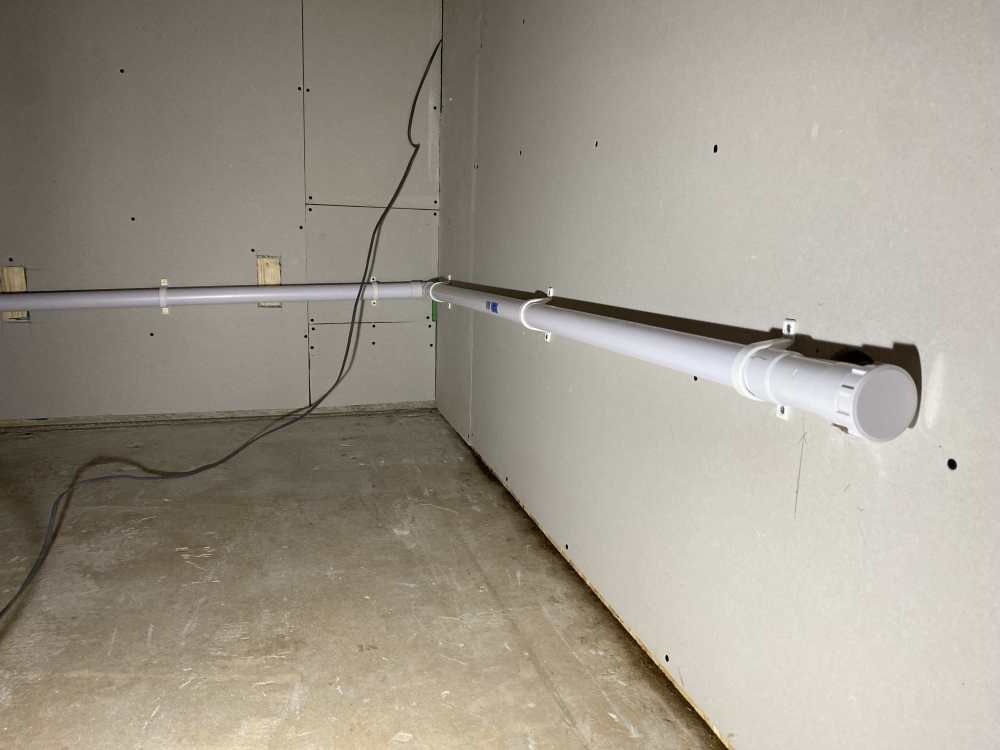

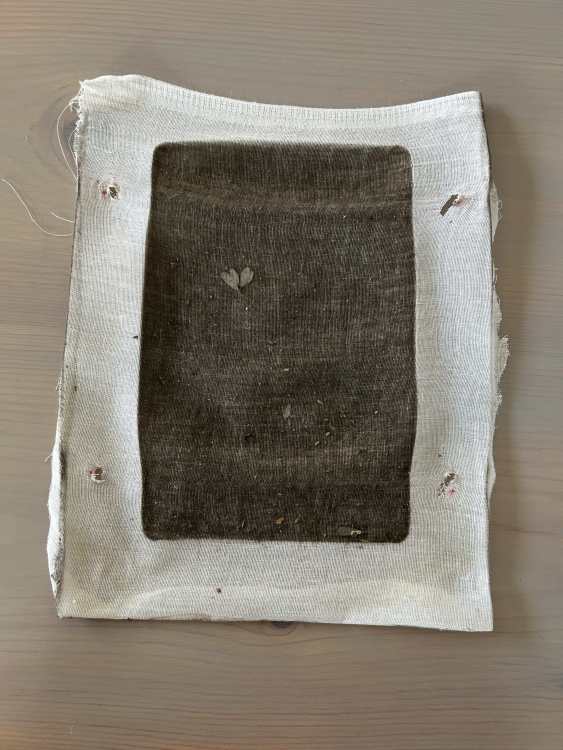
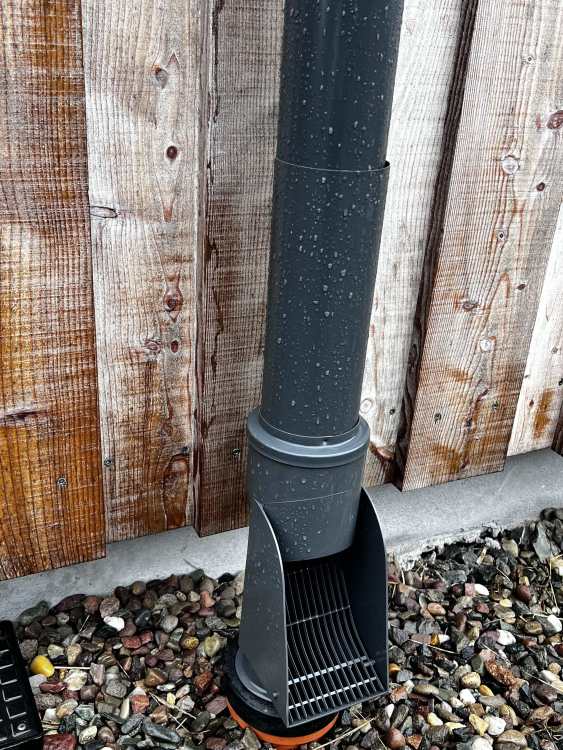

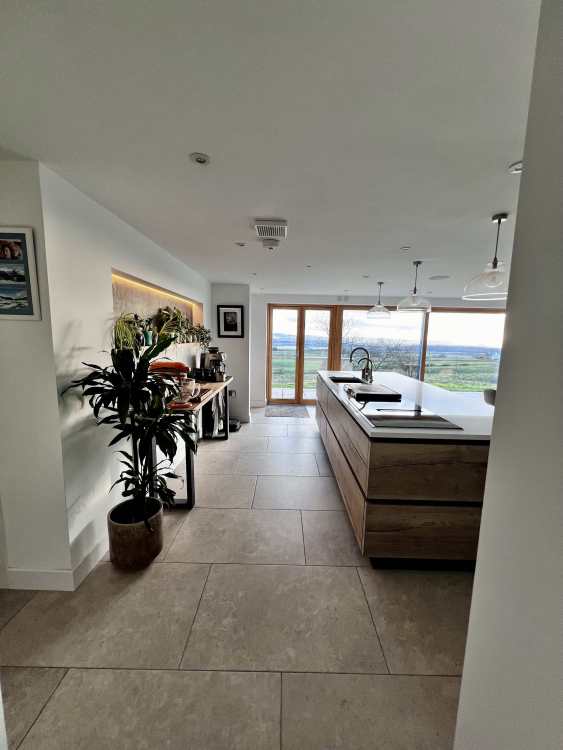




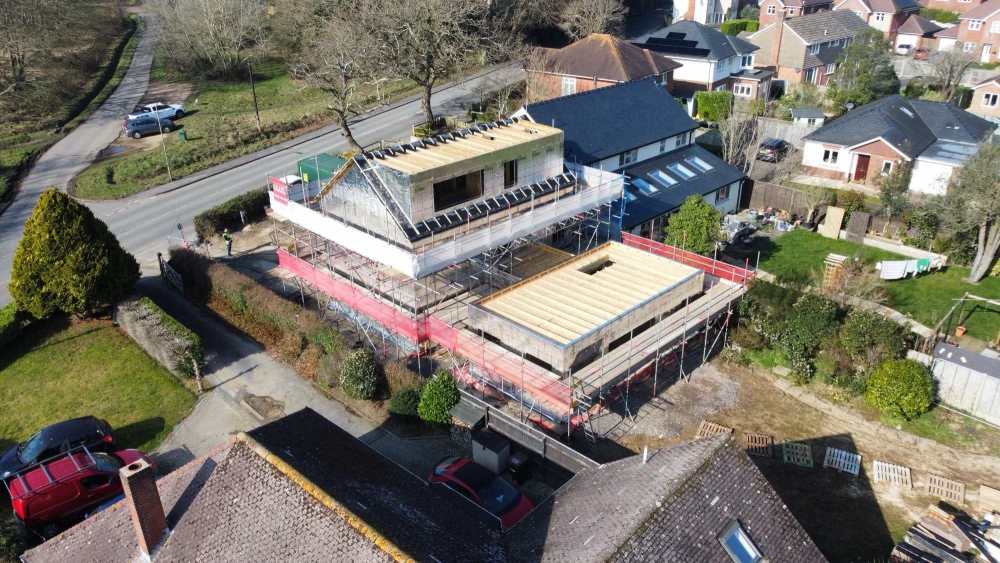

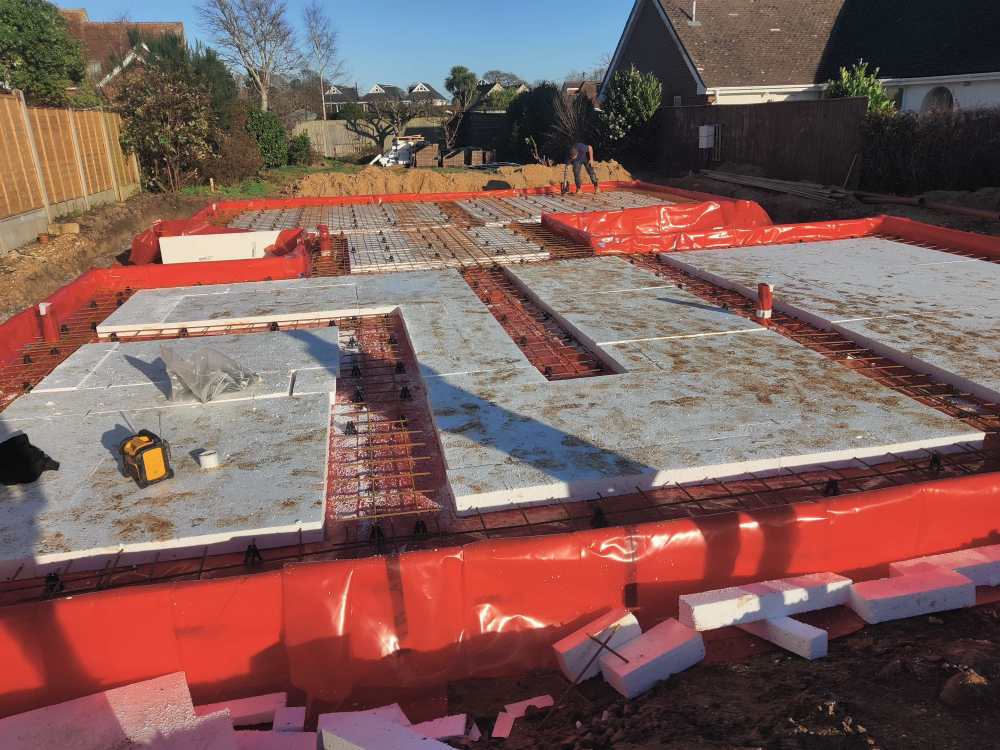
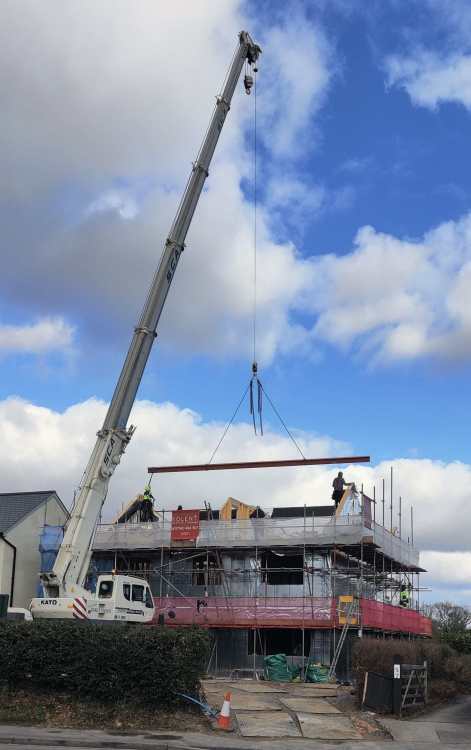
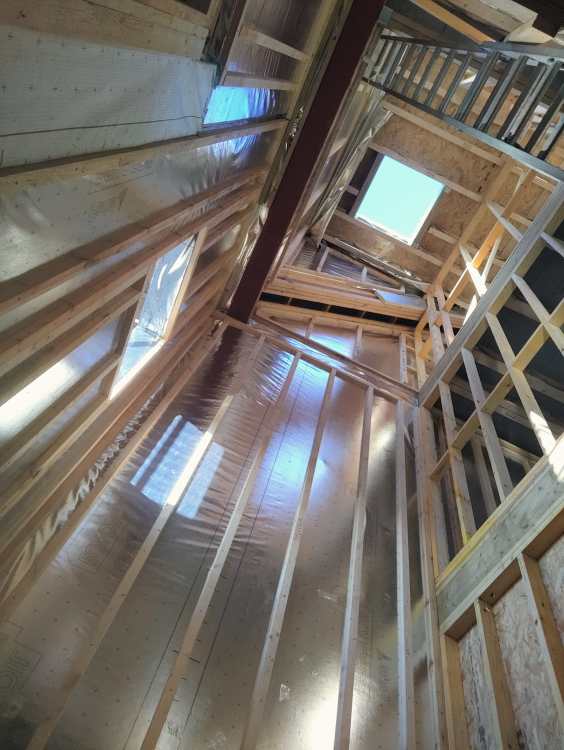

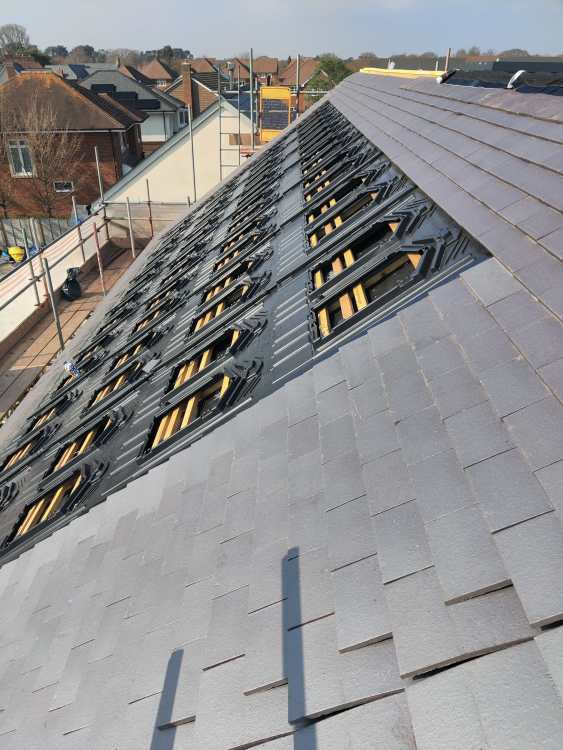
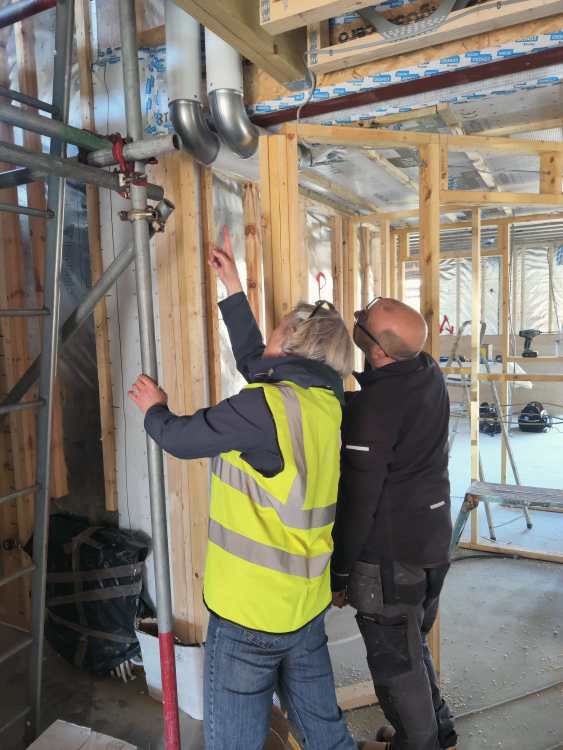
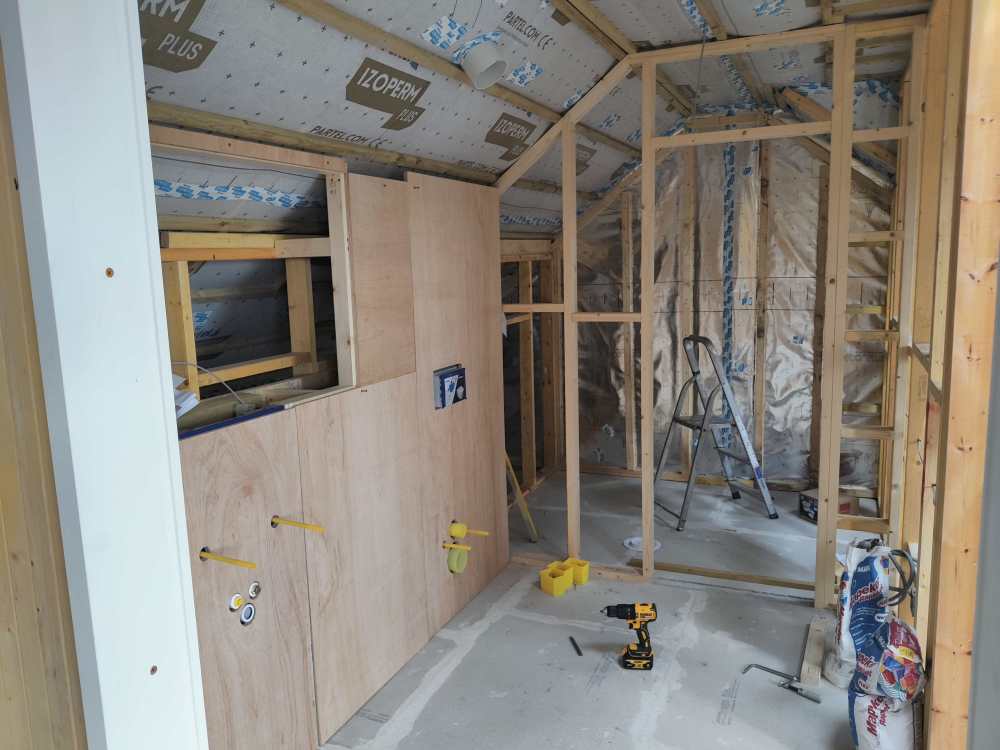
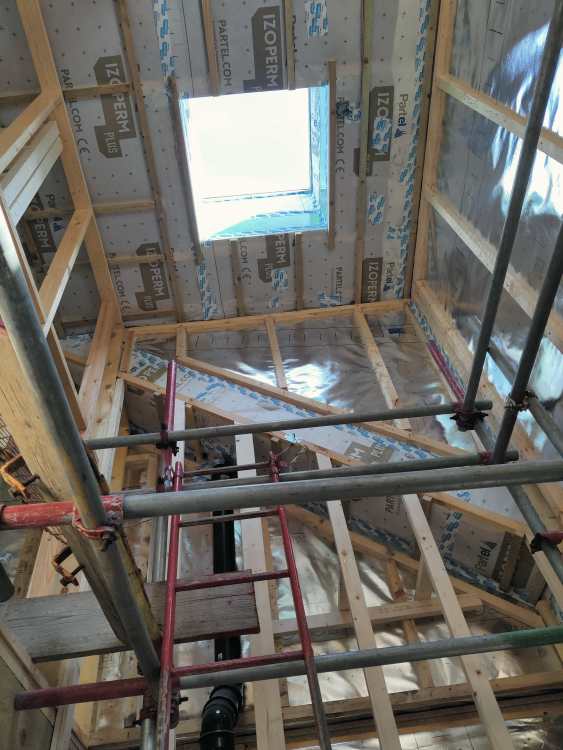

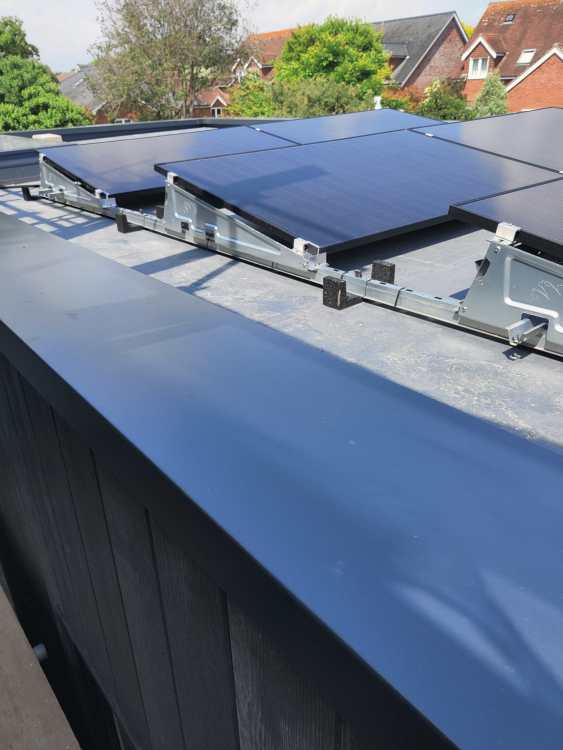
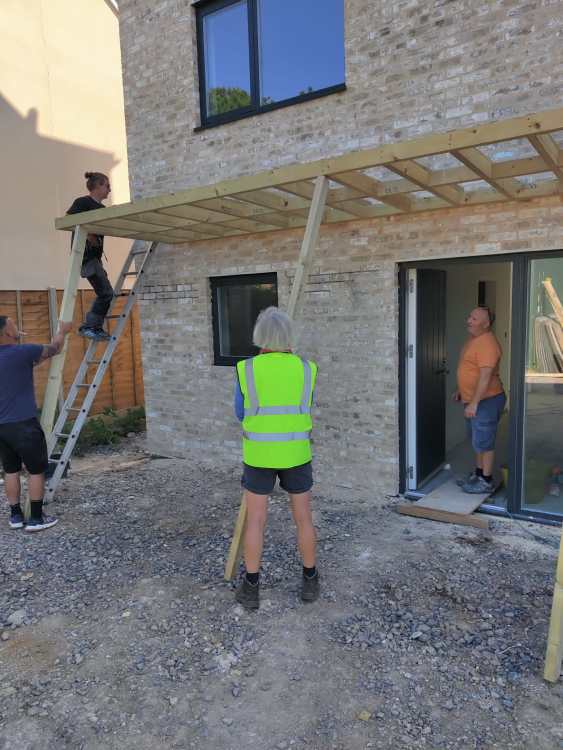

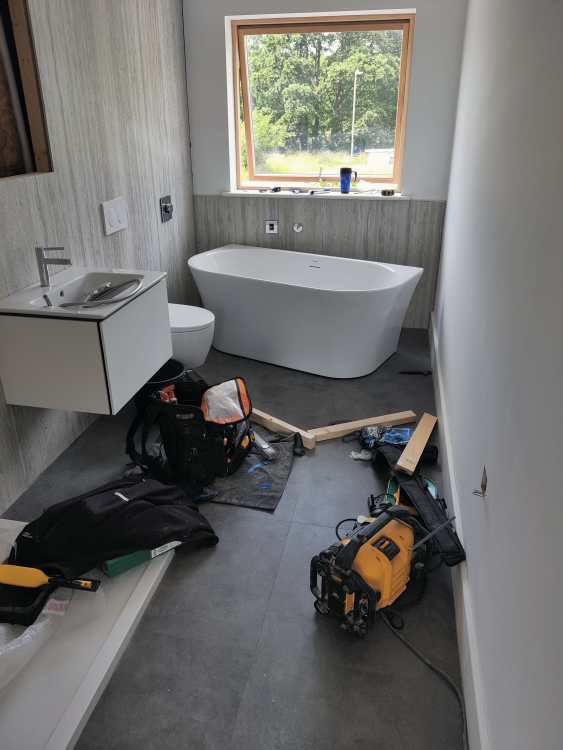
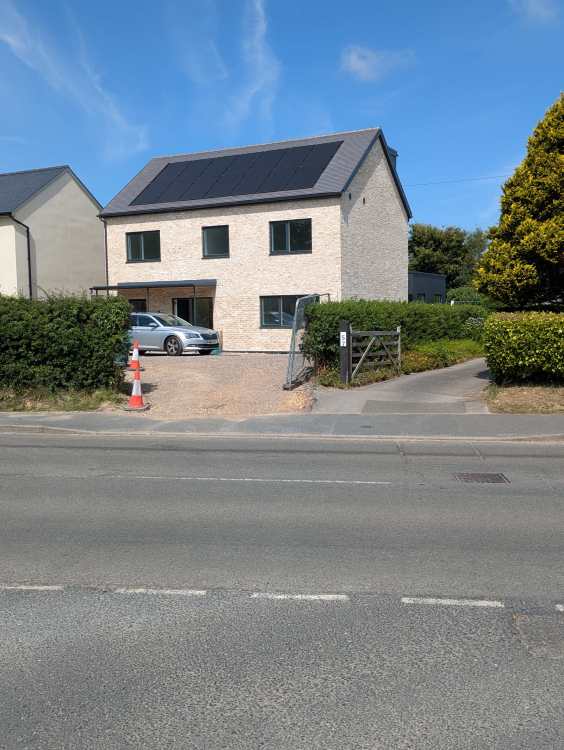
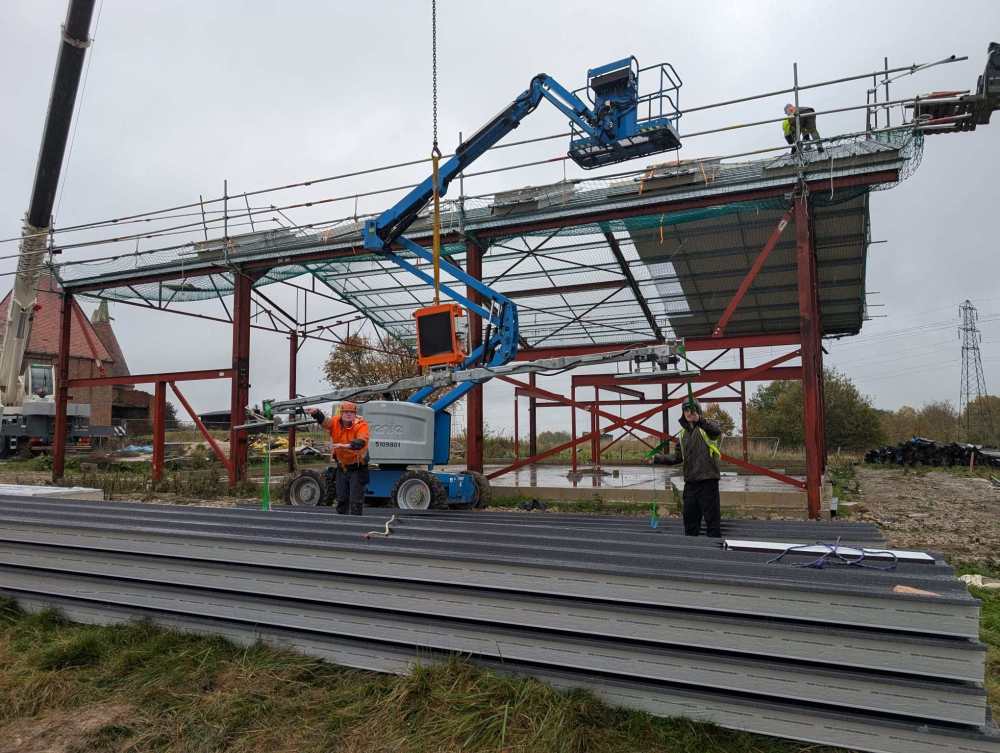

.thumb.jpeg.86916d3ba451a46d594be9b17c60d293.jpeg)
.thumb.jpeg.7511f406beb7343fca21237b2a064baf.jpeg)
